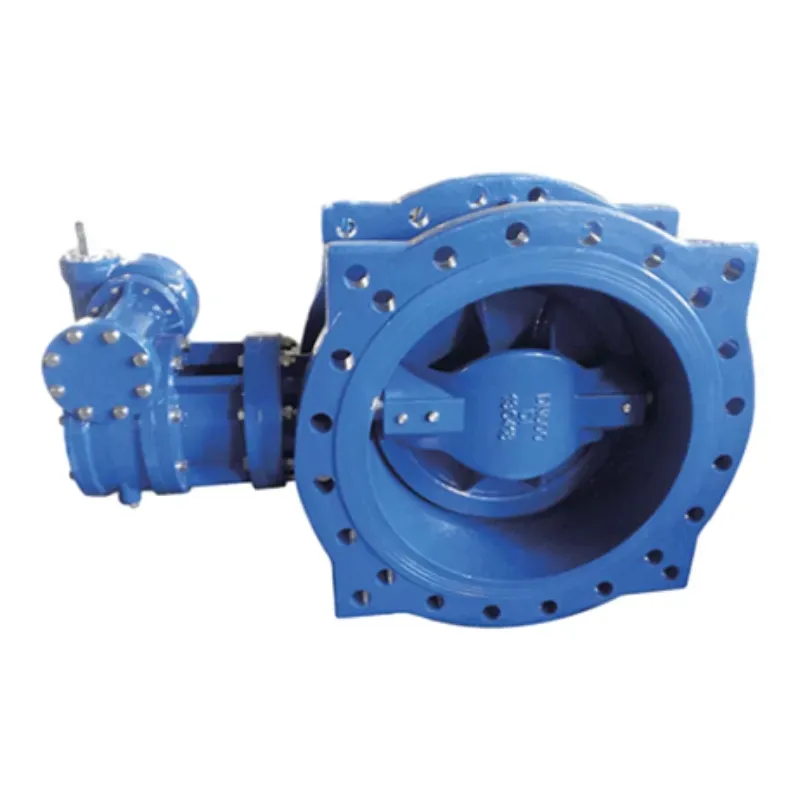ਨਵੰ. . 21, 2024 03:38 Back to list
ductile iron ball check valve
Understanding Ductile Iron Ball Check Valves Features and Applications
Ductile iron ball check valves are critical components in various piping systems, designed to prevent backflow while allowing for smooth flow in the intended direction. These valves are renowned for their durability, reliability, and excellent performance under various conditions, making them a staple in many industrial applications.
What is a Ductile Iron Ball Check Valve?
A ductile iron ball check valve utilizes a spherical ball as its closure element. This ball sits above a seat and is held in place by gravity and fluid dynamics. When the flow direction is normal, the ball moves away from the seat, enabling fluid to pass freely. If there is a reverse flow, the ball is forced against the seat due to gravitational force and the momentum of the fluid, effectively sealing off the flow and preventing backflow.
Ductile iron, also known as ductile cast iron or spheroidal graphite iron, is a material recognized for its high tensile strength, ductility, and resistance to wear and corrosion. It is a popular choice for manufacturing check valves as it offers excellent mechanical properties, making the valves robust and capable of withstanding harsh operating conditions.
Key Features of Ductile Iron Ball Check Valves
1. Robust Construction Ductile iron check valves have exceptional mechanical strength, enabling them to handle high pressure and temperature variations within piping systems. This durability enhances their life span and reduces maintenance costs.
2. Corrosion Resistance When coated or designed with protective materials, ductile iron can withstand corrosive environments, making these valves suitable for wastewater management, chemical processing, and other aggressive applications.
3. Versatile Design Ball check valves can be manufactured in various sizes and configurations, allowing them to fit into different system requirements. Their adaptability makes them ideal for use in water treatment facilities, oil and gas processing, and industrial piping systems.
4. Ease of Maintenance With fewer moving parts compared to other valve types, ductile iron ball check valves require less upkeep. Their straightforward design allows for easy inspection and cleaning, which is crucial in managing operational efficiency and reducing downtime.
ductile iron ball check valve

5. Operational Efficiency The smooth operation of the spherical ball minimizes turbulence and pressure loss, ensuring that the flow remains stable and efficient. This efficiency is particularly beneficial in systems where maintaining consistent pressure and flow rates is critical.
Applications of Ductile Iron Ball Check Valves
Ductile iron ball check valves are employed in a wide range of industries due to their performance, durability, and reliability. Some common applications include
- Water Supply and Distribution These valves are frequently used in municipal water supply systems to prevent backflow, ensuring that potable water remains uncontaminated.
- Wastewater Treatment In sewage and wastewater systems, ductile iron ball check valves help maintain effective flow management, preventing the backflow that could lead to contamination and system failures.
- Chemical Processing The resistance to corrosion makes these valves ideal for chemical plants, where they can handle aggressive and hazardous materials safely.
- Oil and Gas The petroleum industry relies on ductile iron ball check valves to manage the flow of oil and gas, ensuring safety and efficiency in their operations.
Conclusion
In summary, ductile iron ball check valves are essential elements in various piping systems across multiple industries. Their robust construction, resistance to wear and corrosion, versatile design, ease of maintenance, and operational efficiency make them an excellent choice for preventing backflow. As industries continue to evolve and demand more from their equipment, the importance of reliable valves like the ductile iron ball check valve will undoubtedly increase, securing their place as a foundational component in fluid management systems.
Share
-
Reliable Wafer Type Butterfly Valves for Every IndustryNewsJul.25,2025
-
Reliable Flow Control Begins with the Right Ball Check ValveNewsJul.25,2025
-
Precision Flow Control Starts with Quality ValvesNewsJul.25,2025
-
Industrial Flow Control ReliabilityNewsJul.25,2025
-
Engineered for Efficiency Gate Valves That Power Industrial PerformanceNewsJul.25,2025
-
Empowering Infrastructure Through Quality ManufacturingNewsJul.25,2025